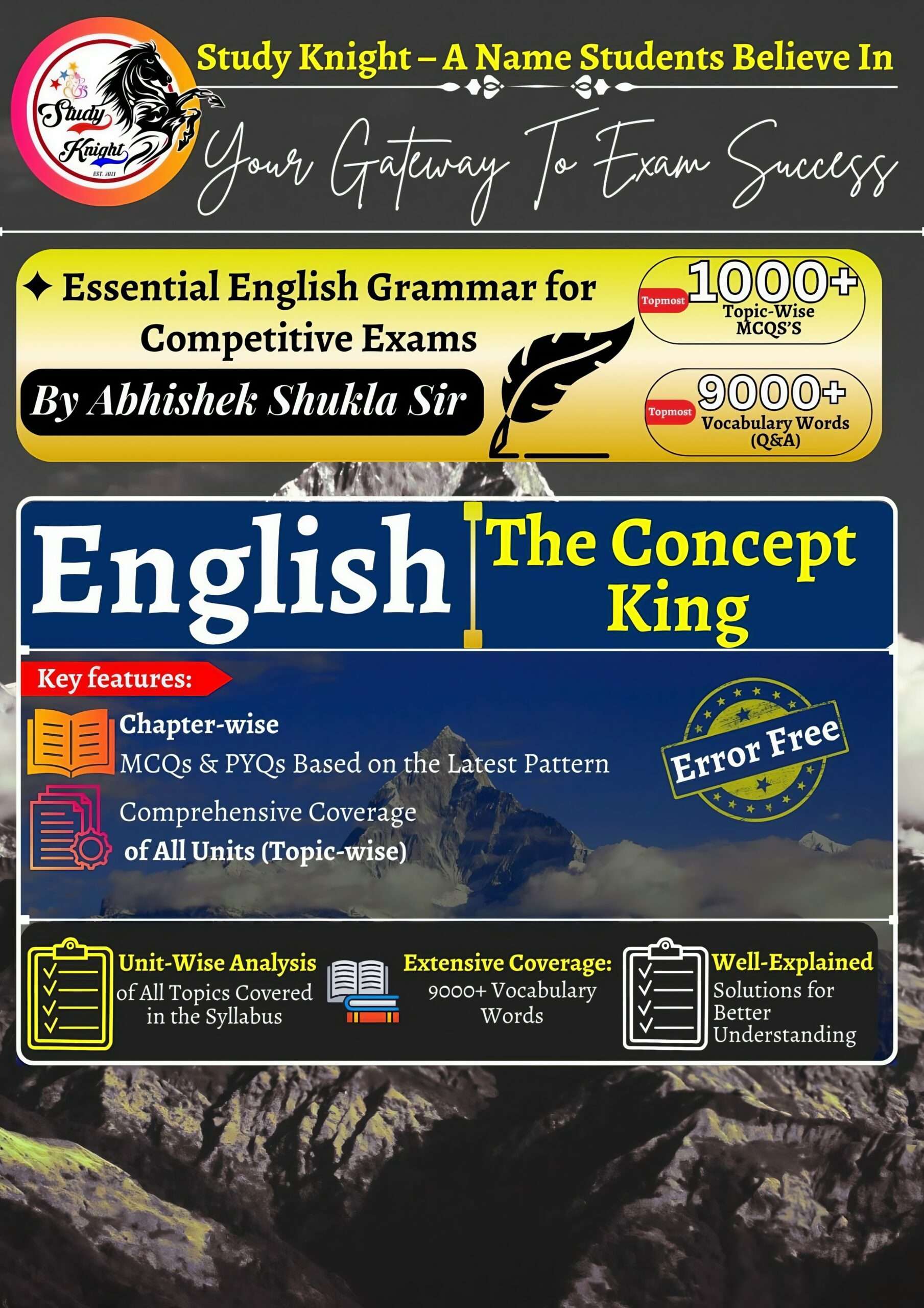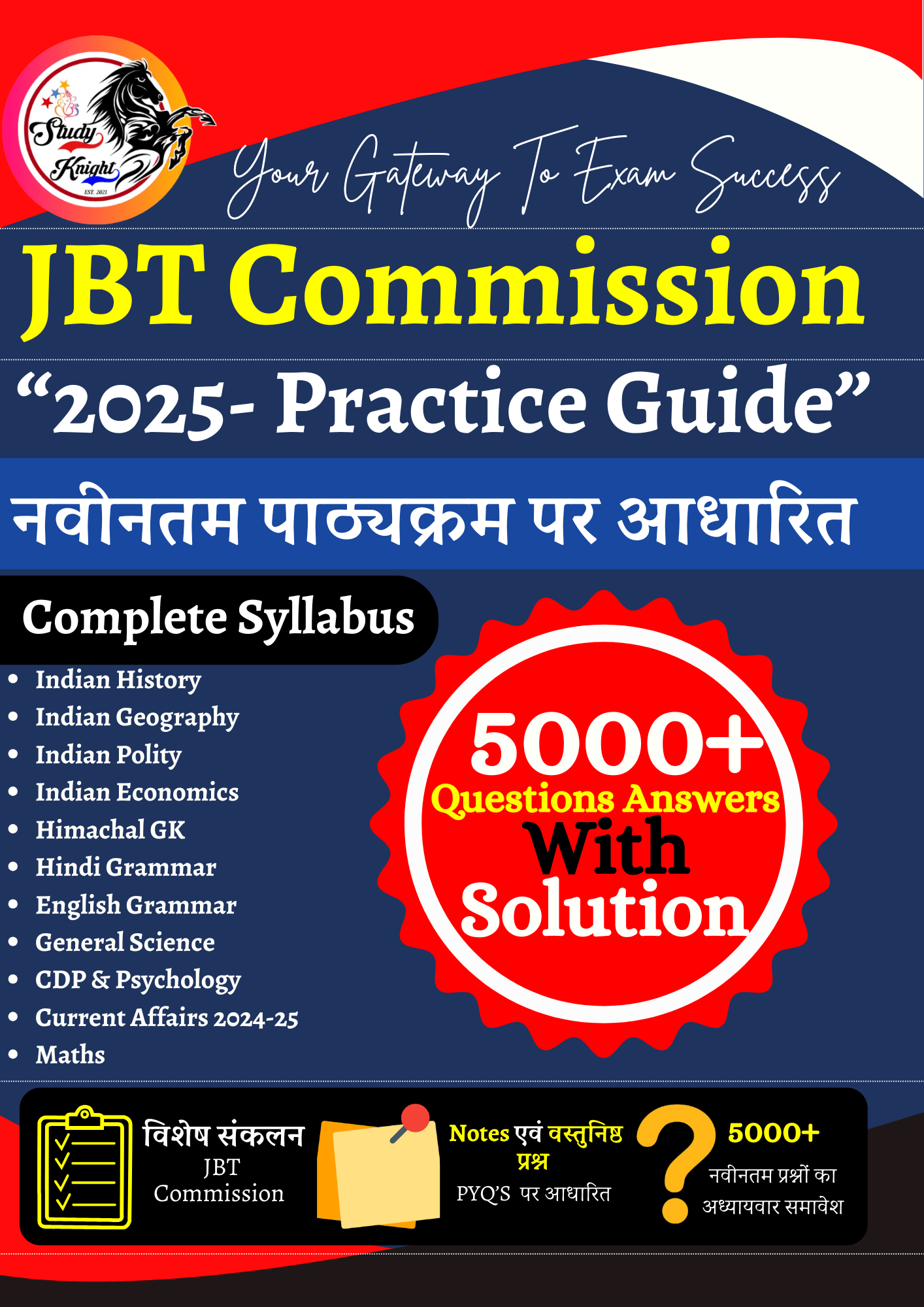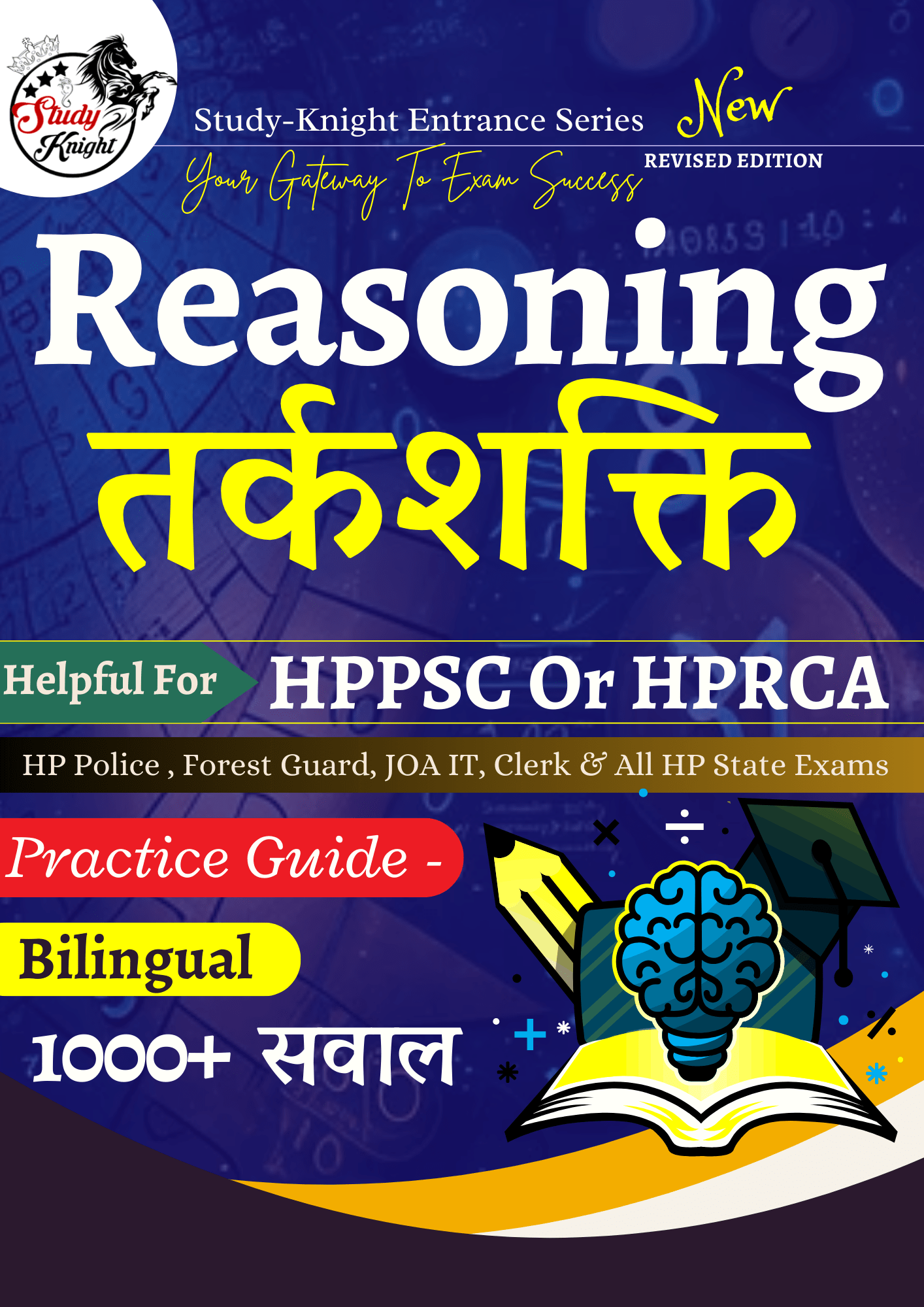भौतिकी में चुम्बकत्व वह प्रक्रिया है, जिसमें एक वस्तु दूसरी वस्तु पर आकर्षण या प्रतिकर्षण बल लगाती है। जो वस्तुएँ यह गुण प्रदर्शित करती हैं, उन्हें चुम्बक कहते हैं। निकल, लोहा, कोबाल्ट एवं उनके मिश्रण आदि सरलता से पहचाने जाने योग्य चुम्बकीय गुण रखते हैं चुंबक के प्रकार :- मुख्यतः चुंबक दो प्रकार के होते हैं। प्राकृतिक चुंबक :- वह चुंबक जो प्रकृति से प्राप्त अयस्क Fe3O4 जिसे मैग्नेटाइट कहते हैं से बनी होती है वह प्राकृतिक चुंबक कहलाती है। प्राकृतिक चुंबक अनियमित या अनिश्चित आकार के होते हैं। इनका चुंबकत्व बहुत कम होता है। चुंबकत्व वाहक बल का मात्रक ऐम्पियर होता है।

Q)1.स्थायी चुम्बकन किस स्थिति में किया जा सकता है ?In which case can a permanent magnet be done?
A). ढलवां लोहा /Slept iron B). पिटवां लोहा /Pitwan iron C). कच्चा लोहा /raw iron D). इस्पात /raw iron
[expand title=”View Answer”]Answer :- इस्पात /raw iron
Explanation :- स्टील कठिनता से चुम्बक बनता है और कठिनता से ही अपने चुम्बकत्व को छोड़ता है। अतः स्थायी चुम्बक बनाने के लिए स्टील का उपयोग किया जता है। उदाहरण के लिए लाउडस्पीकर, दिक्सूचक, गैल्वेनोमीटर आदि के स्थाई चुम्बक स्टील के ही बनाए जाते हैं।Steel makes a magnet with difficulty and leaves his magnetism with difficulty. Therefore, steel is used to make permanent magnet. For example, permanent magnets of loudspeakers, permanent, galvanometer, etc. are made of steel.[/expand]
Q)2.अस्थायी चुम्बक बनाये जाते है-Temporary magnets are made-
A). इस्पात के /of steel B). नर्म लोहे के /of steel C). ताम्बे के /copper D). चांदी के / silver
[expand title=”View Answer”]Answer :- नर्म लोहे के /of steel
Explanation :- नर्म लोहा शीघ्र ही चुम्बक बन जाता है और शीघ्र ही इसका चुम्बकत्व समाप्त भी हो जाता है। इसलिए अस्थाई चुम्बक बनाने के लिए नर्म लोहे का प्रयोग किया जाता है। विद्युत चुम्बक नर्म लोहे के ही बनाए होते हैं। विद्युत घण्टी, ट्रांसफार्मर क्रोड, डायनामों आदि में नर्म लोहे का ही उपयोग किया जाता है।The soft iron soon becomes a magnet and soon its magnetism also ends. Therefore soft iron is used to make temporary magnet. Electumbers are made of soft iron only. Narm iron is used in electric bell, transformer core, dynamies etc.[/expand]
Q)3.विद्युत चुम्बक नर्म लोहे के क्यों बनाये जाते हैक्यूंकि-Why are electromagnets made of soft iron because-
A). कम चुम्बकीय प्रवृति तथा कम धारणशीलता के कारण /Due to low magnetic tendency and low holder B). अधिक चुम्बकीय प्रवृति तथा कम धारणा क्षमता के कारण / Due to more magnetic tendency and low perception capacity C). अधिक चुम्बकीय प्रवृति तथा अधिक धारण क्षमता के कारण /Due to more magnetic tendencies and over -holding capacity D). कम चुम्बकीय प्रवृति तथा अधिक धारण क्षमता के कारण / Causes of low magnetic tendency and excess holding capacity
[expand title=”View Answer”]Answer :- अधिक चुम्बकीय प्रवृति तथा अधिक धारण क्षमता के कारण /Due to more magnetic tendencies and over -holding capacity
Explanation :- विद्युत चुम्बक नर्म लोहे के अधिक चुम्बकीय प्रवृति तथा अधिक धारण क्षमता के कारण बनाये जाते है।Electumbers are made due to more magnetic tendencies of soft iron and over -holding capacity.[/expand]
Q)4.यदि एक चुम्बक को दो भागों में विभक्त कर दिया जाए If a magnet is divided into two parts
A). दोनों भाग पृथक पृथक चुम्बक बन जाते है /Both parts become separate magnets B). एक भाग चुम्बक तथा दूसरा भाग अचुम्बक बन जाता है /One part becomes a magnet and the other part becomes Asdambak C). एक भाग उतरी ध्रुव बन जाता है /A part becomes up to the pole D). दोनों भाग अचुम्ब्कीय बन जाते है /Both parts become amazing
[expand title=”View Answer”]Answer :- दोनों भाग पृथक पृथक चुम्बक बन जाते है /Both parts become separate magnets
Explanation :- यदि एक चुम्बक को दो भागों में विभक्त कर दिया जाए तो दोनों भाग पृथक पृथक चुम्बक बन जाते है।If a magnet is divided into two parts, both parts become separate magnets.[/expand]
Q)5.किसी चुम्बक की आकर्षण शक्ति सबसे अधिक कहाँ होती हैWhere is the attraction power of a magnet
A). दोनों किनारों पर / on both sides B). मध्य में / on both sides C). चुम्बकीय अक्ष पर /on magnetic axis D). सभी जगह समान होती है /is the same everywhere
[expand title=”View Answer”]Answer :- दोनों किनारों पर / on both sides
Explanation :- किसी चुम्बक की आकर्षण शक्ति सबसे अधिक दोनों किनारों पर होती है।The attraction power of a magnet is most on both sides.[/expand]
Q)6.किसी चुम्बक की आकर्षण शक्ति सबसे कम कहाँ होती हैWhere is the attraction power of a magnet
A). दोनों किनारों पर /on both sides B). मध्य में / in the middle C). चुम्बकीय अक्ष पर /on magnetic axis D). सभी जगह समान होती है / is the same everywhere
[expand title=”View Answer”]Answer :- मध्य में / in the middle
Explanation :- किसी चुम्बक की आकर्षण शक्ति सबसे कम बीच में होती हैThe attraction power of a magnet is the lowest in the middle.।[/expand]
Q)7.निम्न में से कौन सा कथन असत्य हैWhich of the following statements is untrue
A). चुम्बक के समान ध्रुवों के बीच प्रतिकर्षण होता है /There is a repulsion between the poles similar to the magnet B). चुम्बक के विपरीत ध्रुवों के बीच आकर्षण होता है /There is attraction between poles opposite the magnet C). एक विलग ध्रुव का कोई अस्तित्व नही होता है / A Willhag Pole does not exist D). किसी चुम्बक को बीच से तोड़ देने पर इसके दोनों ध्रुव अलग अलग हो जाते है /Both its poles separate when a magnet is broken from the middle.
[expand title=”View Answer”]Answer :- किसी चुम्बक को बीच से तोड़ देने पर इसके दोनों ध्रुव अलग अलग हो जाते है /Both its poles separate when a magnet is broken from the middle.
Explanation :- किसी चुम्बक को बीच से तोड़ देने पर इसके ध्रुव अलग-अलग नहीं होते, बल्कि टूटे हुए भाग पुनः चुम्बक बन जाते हैं तथा प्रत्येक भाग में उत्तरी तथा दक्षिणी ध्रुव उत्पन्न हो जाते हैं। अतः एक अकेले चुम्बकीय ध्रुव का कोई अस्तित्व नहीं होता है।When a magnet is broken from the middle, its poles do not separate, but the broken parts become a magnet again and in each part the northern and southern poles arise. Therefore, a lone magnetic pole alone does not exist.[/expand]
Q)8.चुम्बकीय क्षेत्र का मात्रक होता हैThe unit of magnetic field is
A). गौस /Gaus B). बेबर /disobedience C). हेनरी /Henry D). डोमेन /Henry
[expand title=”View Answer”]Answer :- गौस /Gaus
Explanation :- [/expand]
Q)9.चुम्बकीय फ्लक्स का मात्रक हैMagnetic is the unit of flux
A). वेबर /Weber B). गौस /Gaus C). हर्ट्ज / Hz D). टेसला / Tesla
[expand title=”View Answer”]Answer :- वेबर /Weber
Explanation :- चुम्बकीय अभिवाह या चुम्बकीय फ्लक्स (Magnetic flux) वह भौतिक राशि है जो किसी तल (जैसे किसी चालक तार की कुण्डली) से होकर गुजरने वाले चुम्बकीय क्षेत्र का सम्पूर्ण परिमाण की माप है। इसे संक्षेप में m से निरूपित किया जाता है। इसका SI मात्रक वेबर (weber) है; व्युत्पन्न मात्रक वोल्ट – सेकेण्ड है तथा CGS मात्रक ‘मैक्सवेल ‘ है ।Magnetic Abhiva or Magnetic Flux is the physical amount that is the measure of the entire magnitude of the magnetic field passing through a floor (such as a driver wire horoscope). It is briefly represented by M. Its SI unit is Weber; The derivative unit is volt -second and the CGS unit is ‘Maxwell’.[/expand]
Q)10.निम्नलिखित में से कौन लौह चुम्बकीय पदार्थ नही हैWhich of the following is not iron magnetic material
A). लोहा / iron B). निकिल /Nikil C). ताम्बा /copper D). कोबाल्ट /cobalt
[expand title=”View Answer”]Answer :- ताम्बा /copper
Explanation :- तांबा लौह चुम्बकीय पदार्थ नही है।Copper is not iron magnetic material.[/expand]











